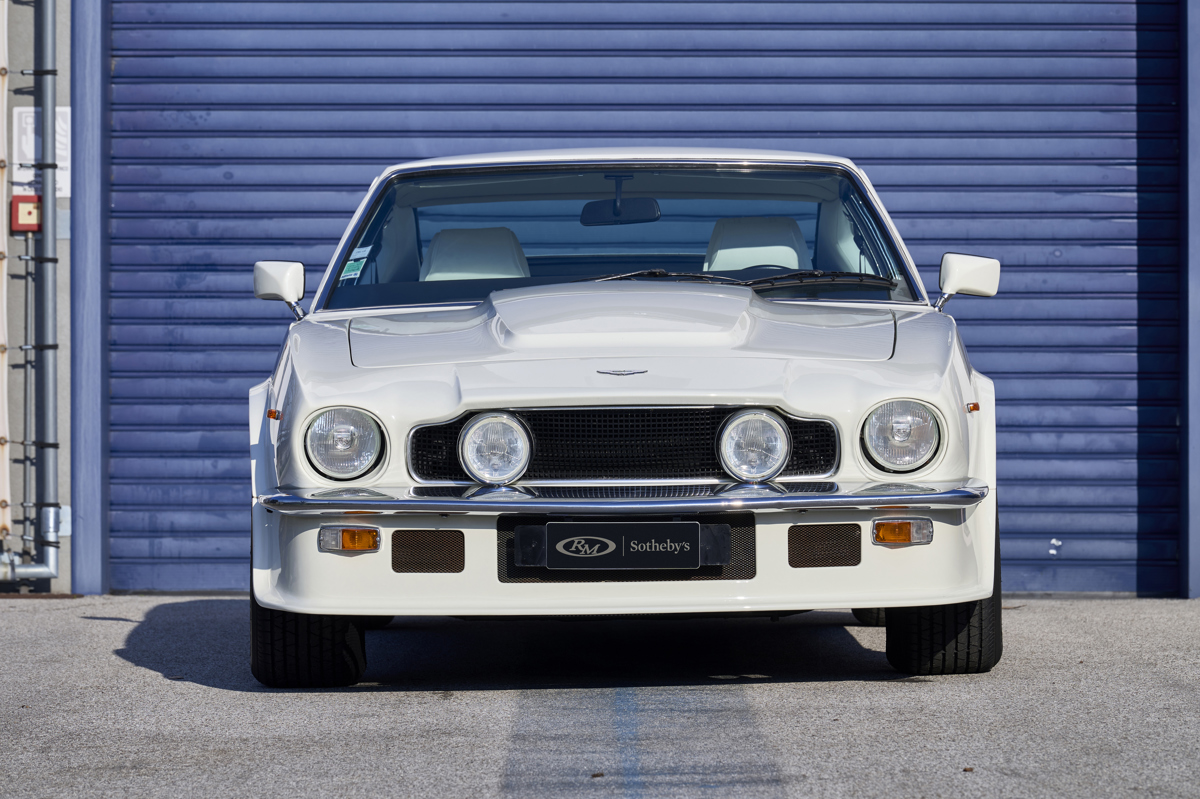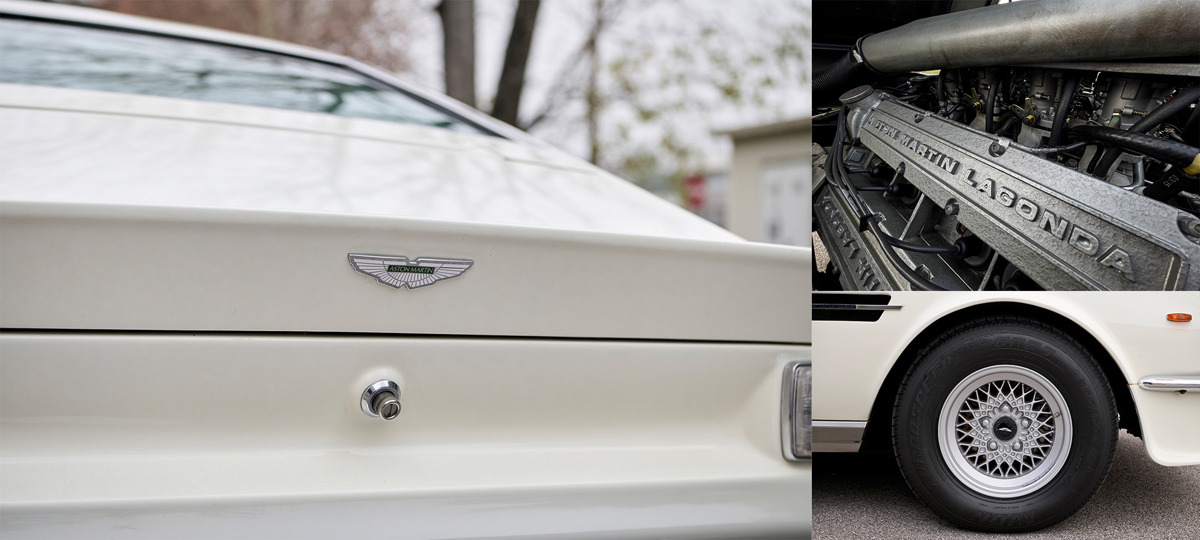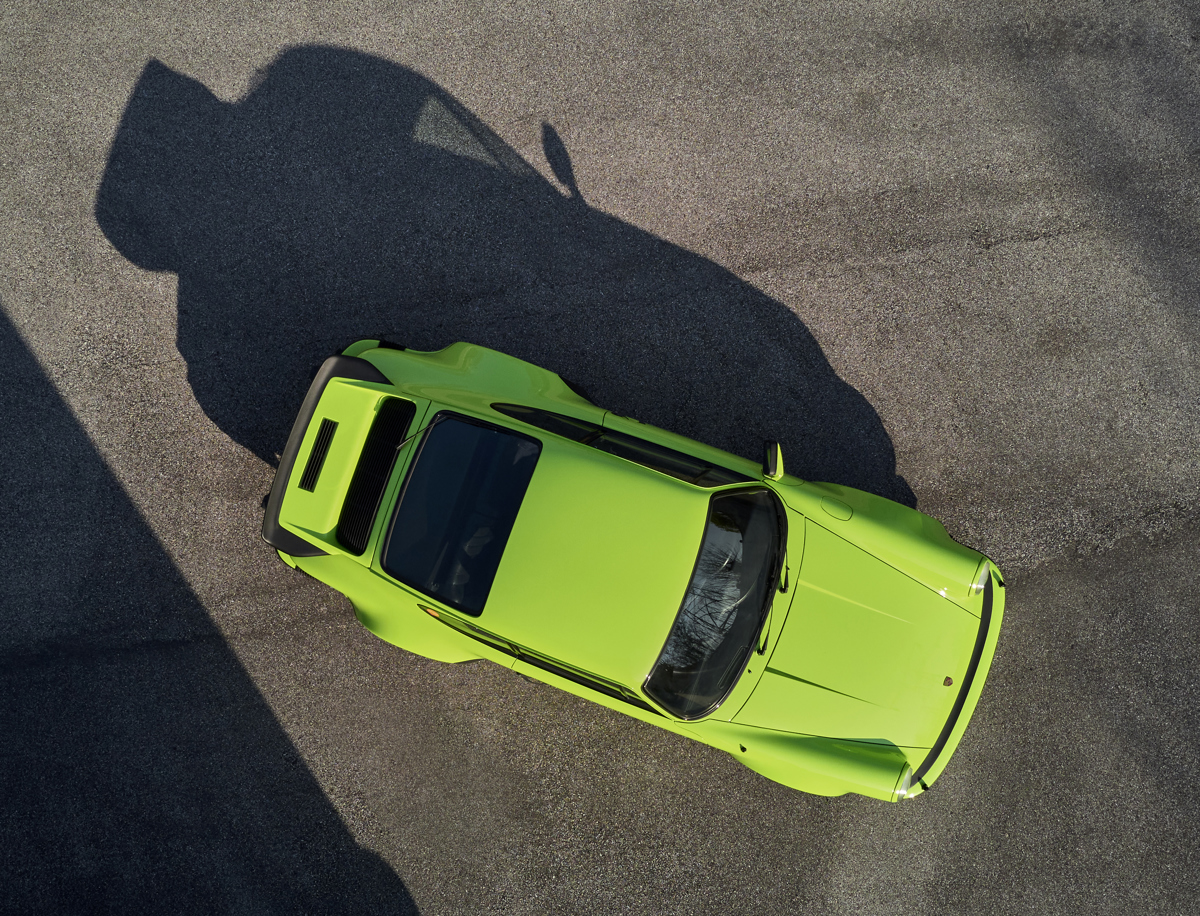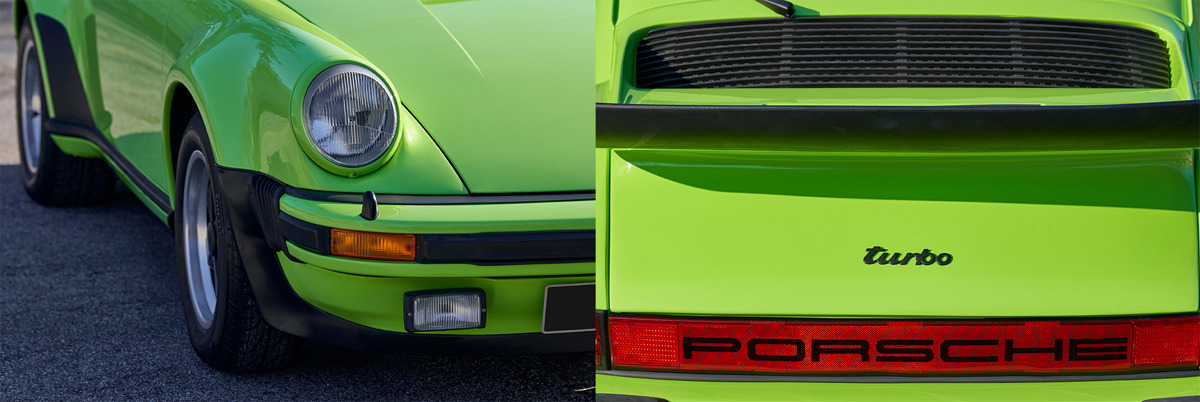Imagine this – you’ve woken up early on a fresh Sunday morning on the French Riviera. Within the underground garage sitting below your apartment that overlooks Port Hercule lies two cars. The question is not whether you should go out for a weekend spin, but more which one of the two you should take.
In one hand, lies the keys of a British built V8 front-engined brute; an uncommon sight on any road and something that will truly draw the crowd wherever it’s driven–even more so in this particular example’s ‘look at me’ colour scheme of special white over white. In the other hand you hold the keys of a model from another great manufacturer, but this time from Stuttgart, Germany. These keys possess the potential to unleash a 3-litre flat six turbo, a car that took on the giants of its day–and won.
There is no fixed design ethos when it comes to producing an effective performance car. Colin Chapman famously encapsulated the design philosophy at Lotus by stating ‘for speed add lightness’–that is to say, use lightweight materials, keep the car relatively unadorned and utilise smaller, lighter engine configurations in favour of large, muscular multi-cylinder engines with monster power. So too did Aston Martin and Porsche develop their own design philosophies, with each holding true over multiple decades of sports car production. The two approaches couldn’t be more different, with the British manufacturer favouring front-engined, brute power and luxury appointments, while the pragmatic German manufacturer favoured a smaller flat-six, slung out far behind the driver. Oh, and just enough luxury to justify the price tag. Premium, for sure, but not opulent.
Well, thankfully the choice of which of these two iconic sports cars to choose can be made real, as fine examples of each head to RM Sotheby’s Monaco 2022 sale.
1983 Aston Martin V8 Vantage V580 'Oscar India'
Estimate: €240,000 - €280,000 EUR
So, let’s imagine you have chosen the 1983 Aston Martin V8 Vantage. You seat yourself into the cockpit and let that throaty V8 come up to temperature as you plan the route you’re going to take over the Riviera to the mountains high above the coastline. Setting off, sunglasses blocking the piercing view of the early sun rising across the mountains, you notice a reassuring tightness and quality in the V8 Vantage, in part thanks to its three separate restorations, including an engine tune by the experts at Aston Martin Heritage in 2018. You relax your right foot a little further, beginning to analyse what it is that makes the V8 Astons of this period so utterly compelling. What are the characteristics of these cars that make them the ultimate embodiment of a British, performance GT. This isn’t a car to be contained–this is a car for open spaces and transcontinental fun.
You’re behind the wheel of a LHD specification, one of 41, 1983 Aston Martin V8 Vantage V580 ‘Oscar India’, a car renowned for its power and mighty performance. Accelerating a little harder into the first hairpin bend, you feel truly immersed in a car that is increasingly finding a devoted following and is highly regarded in the collector’s market, for more than rarity alone, but for its road presence and the fact that this car was lovingly assembled by craftsmen, including its mighty V8. As a car that could outrun a Ferrari Testarossa in a 0-60 mph dash, the pace of this Aston cannot be underestimated. A significant engine upgrade helped the 375 hp car achieve this feat, with V580 designated cars benefitting from upgraded camshafts to help propel it ahead of some very exotic competitors.
So why the ‘Oscar India’ designation? The rather obscure yet exotic sounding moniker, actually only signifies that this derivative was fourth series edition. It turns out to have been an internal factory codename while the car was in development, coined by Alan Curtis, a senior executive of Aston Martin at the time, and an aviation fanatic, who favoured the use of the phonetic alphabet. Oscar India signified that the car was having an October Introduction, with the car due to be unveiled at the Birmingham International Motor Show in October 1978. Behind the wheel, shifting into third over a small crest in the road you find yourself loving that this example is the far rarer, manual version of the V8 Vantage, providing a more engaging driving experience than is available via the more common automatic box.
1976 Porsche 911 Turbo Coupé
Estimate: €225,000 - €275,000 EUR
Let’s wind back the clock and say you’ve chosen to take the Porsche on your Sunday morning spin. A different car in many senses of the word, but certainly no less of a legend, the 930 Turbo is an icon that set the stage for the German based manufacturer to embark on a new era of turbocharging the 911–a move that would unleash mighty performance and deliver numerous, spectacular 911 derivatives.
Behind the wheel, the Porsche feels instantly more workmanlike compared to the Aston Martin. The 911 driving position is effective though not conventional, but at once you feel at one with the car. As you leave the principality for those sweeping roads, you can feel the turbo spooling up as your revs increase–but be ready for the moment all 256 horsepower hits you with vengeance, and be cautious that full boost doesn’t hit the rear wheel mid-corner. It’s clearly a car that won’t suffer fools. Once you realise this turbo technology was originally designed for the legendary 917/30 racing machines, you start to understand why this 911 became a supercar game-changer back in the mid ‘70s. With the road ahead, you can afford a glance in the rear mirrors, revealing that famous ‘whale-tail’ spoiler, for so many years the instant visual clue to what lurked beneath. This is a great drivers’ car, but it’s also easy and practical to drive at low speeds and through town–the ingredients that make these cars so appealing. Drive to the shops for groceries? No problem. Fast laps at Paul Ricard? Bring it on!
The drive back home feels as special as the drive out–these cars intoxicate in a way that few others do. The car’s relative lightness versus other supercars is obvious from the driver’s seat, and those wide rear haunches and chunky rubber enable exceptional traction at the rear wheels, helped, of course, by the weight distribution. A punch at the throttle allows you to feel the turbo spool up once more, and that’s when you fully appreciate how great it is to be behind the wheel of a Turbo–every 930 is a great drive, but this is just so much…more.
But when the daydreaming is over, which to choose? Whilst one could make the choice, it’s undeniable that owning both would be the dream scenario. The Porsche will hit the spot when the driver in you wants to head to the roads of Le Grande Corniche up in the hills, whereas the Aston would undoubtedly convey you in speed, style, and comfort to the Casino de Monte-Carlo with barely a hair out of place. If either of these great cars catches your eye, there is still plenty of time to register your interest for both at the upcoming auction in Monaco in May.







